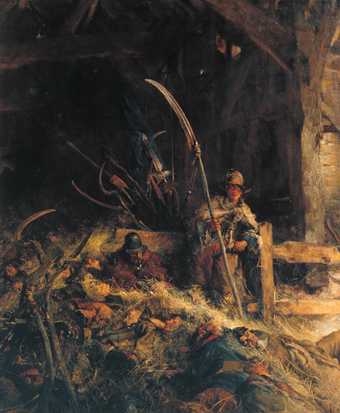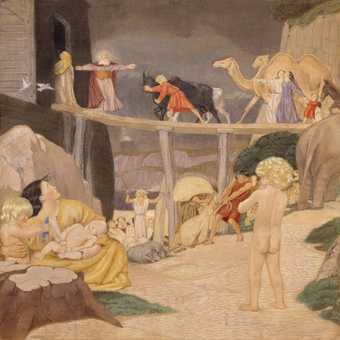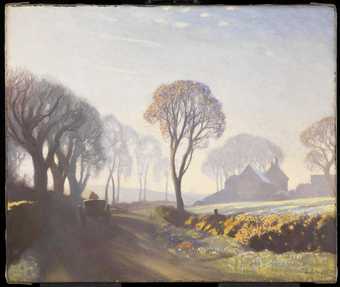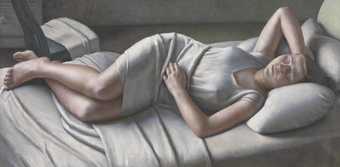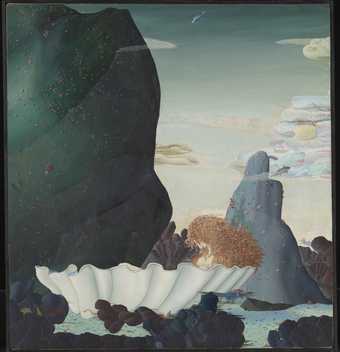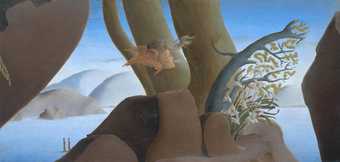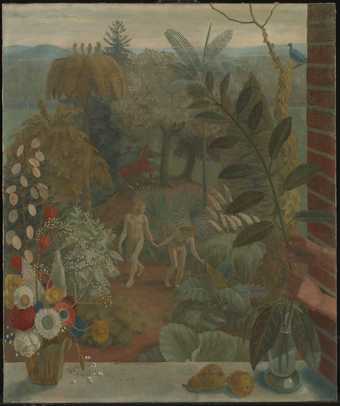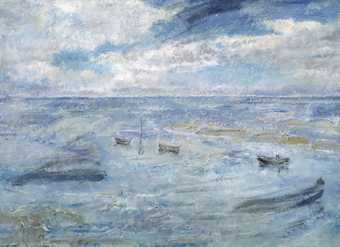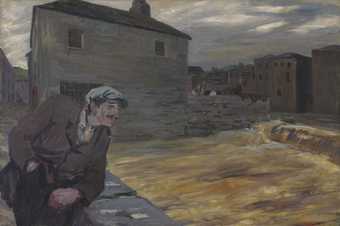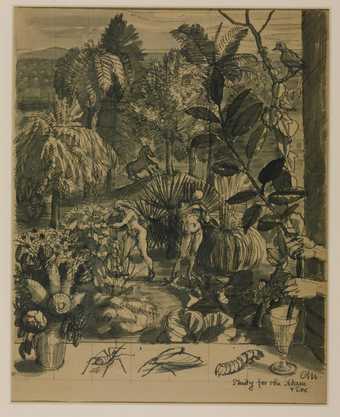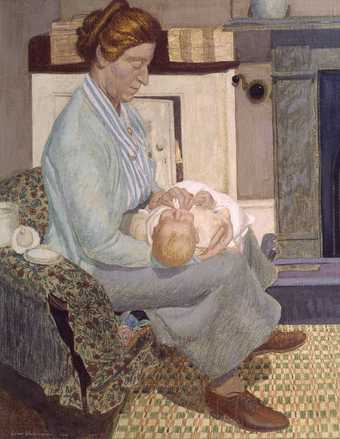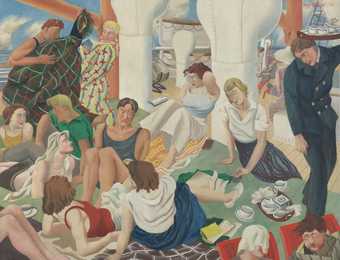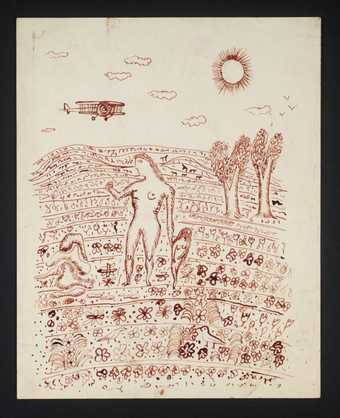
Not on display
- Artist
- Mary Adshead 1904–1995
- Medium
- Tempera on canvas
- Dimensions
- Support: 515 × 427 mm
frame: 630 × 540 × 65 mm - Collection
- Tate
- Acquisition
- Purchased 1997
- Reference
- T07228
Summary
Adshead included Morning after the Flood in her first solo show at the Goupil Gallery, London in 1930. It is typical of the style of 'decorative painting' that was taught at the Slade School of Art, which Adshead attended from 1921 to 1924 under Professor Henry Tonks. The Slade School tutors regularly set figure compositions for their students, in which the prescribed subject matter was taken from the Bible, and Adshead kept to that practice in this work. The painting depicts the day following the subsidence of the biblical Flood, when Noah's Ark came to rest on dry land. In the small catalogue which accompanied her 1986 show at Sally Hunter Fine Art, Noel Carrington wrote of Adshead's 'sense of design, wit and joie de vivre'. These qualities are evident in this work, particularly in the inclusion of the elephant, camel and kangaroo. Adshead's son Sylvester Bone called Morning after the Flood 'the most mysterious picture of [Adshead's] that I know' (letter to Tate Gallery, 30 June 1997).
Further reading:
Mary Adshead, exhibition catalogue, Sally Hunter & Patrick Seale Fine Art, London 1986
Katy Deepwell (ed.), Ten Decades: Careers of Ten Women Artists born 1897-1906, exhibition catalogue, Norwich Gallery, Norwich 1992
Terry Riggs
December 1997
Does this text contain inaccurate information or language that you feel we should improve or change? We would like to hear from you.
Technique and condition
The picture is painted on one piece of fine, plain woven linen canvas. The canvas is stretched over a three-ply board. The unpainted 'tacking' margins are folded around the back of the board and stuck down with a water-soluble glue. This plywood panel, with its chamfered edges, was the backing board from a frame used by the artist for another work. The canvas appears originally to have been attached to another panel or stretcher. The present panel is a little larger than the painted face of the canvas, and there are vacant holes in the unpainted margins.
The canvas was prepared for painting with a thin layer of animal glue size applied to the stretched face. There is no pigmented ground. The composition was carefully drawn out in graphite pencil. The canvas had been prepared with a five inch pencilled grid with diagonals to assist in transferring the composition. It was painted in generally thinly applied colours, with a small soft-tipped brush. Some areas are very thinly painted, or not painted at all, utilising the colour of the sized canvas. The drawing remains clearly visible in all areas. More opaque colours are built up in several layers. The paint films appear moderately lean with a subtle 'eggshell' gloss, characteristic of polished egg tempera painting. Confirmation of the medium awaits analysis. It is described as 'tempera' in an inscription by the artist. The painting is not varnished.
On acquisition the painting was in a delicate and dirty condition. The plywood panel was badly warped and the face veneer was delaminating into a large blister. This was causing the canvas to distort badly. The canvas was also being degraded by acidic products migrating from the plywood. The whole surface of the painting exposed in the frame had accumulated and absorbed dirt. This has resulted in a general lowering of tone and loss of colour. The surface was also damaged by innumerable fine scratches, scuff marks and abrasions. Some of the leaner colours, such as the ochres, had developed very fine cracks and flaking, especially towards the edges. Despite the extent of the damage and changes in appearance, the image remains legible. The painting is currently undergoing treatment involving removal of the canvas from the panel, flattening and conservation of the original canvas and removal of the superficial surface dirt.
The frame is in poor condition with weak joints and extensive damage to the mouldings and surface finish.
Roy Perry
December 1997
Explore
- architecture(30,960)
-
- townscapes / man-made features(21,603)
-
- path(385)
- vessels and containers(2,157)
-
- cage(54)
- boy(1,153)
- female(1,681)
- Bible: Old Testament(381)
-
- Flood(23)
- Noah’s Ark(12)
- sex and relationships(833)
-
- couple(1,322)
- boat - non-specific(2,203)
You might like
-
Edgar Bundy The Morning of Sedgemoor
1905 -
Margaret Gere Noah’s Ark
c.1909 -
Sir George Clausen The Road, Winter Morning
exhibited 1923 -
Dod Procter Morning
1926 -
Margaret Barker Any Morning
exhibited 1929 -
Sir Thomas Monnington Allegory
c.1924 -
Thomas Lowinsky The Dawn of Venus
1922 -
Thomas Lowinsky The Breeze at Morn
1930 -
Charles Mahoney Adam and Eve in the Garden of Eden
exhibited 1936 -
Dame Ethel Walker Seascape: Autumn Morning
c.1935 -
Jack Butler Yeats Morning after Rain
1923 -
Charles Mahoney Study for ‘Adam and Eve’
c.1936 -
Leon Underwood The Fireside
1919 -
Mary Adshead The Cruise
1934 -
Cecil Collins Adam and Eve
c.1933

